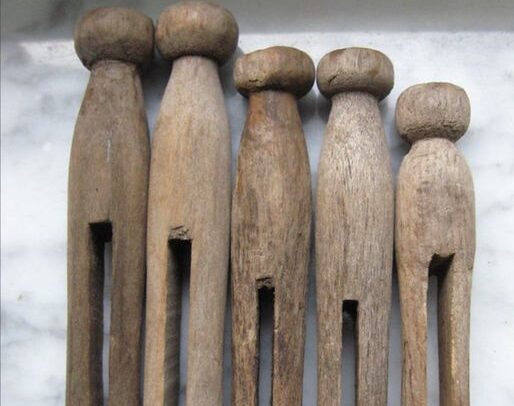At first glance, they look like simple wooden figures. A bit whimsical, a bit eerie. Like miniature beings frozen in silent anticipation. They stand in rows—like little soldiers or characters from some forgotten ritual. There’s something primitive in their form. Simple, rough, yet strangely expressive.
Imagine finding them in an old chest in your grandmother’s attic. Covered in dust, darkened with age, carrying the faint scent of aged wood. You immediately want to hold them, examine them, understand what they are. There are no markings, no labels. And yet, they feel oddly familiar—almost intimate—as if they’ve silently witnessed someone’s daily life, someone’s quiet routine.
Over time, you begin to sense their importance. These objects once played a key role in a process that united generations. They were essential helpers, and every household had them by the dozen. Despite their simplicity, they served a purpose without which everyday life would have been much harder.
It’s only by the fourth look that it hits you: these are vintage wooden clothespins. That’s right—these silent little “figures” once held freshly washed laundry on a line. No springs, no metal parts—just carved wood and a split end that gripped fabric as it dried in the sun.
Today, they may seem outdated. But there’s a quiet beauty in their simplicity—a reminder of a time when things were made to last, and even the most ordinary objects carried a sense of purpose and authenticity.













+ Немає коментарів
Додайте свій